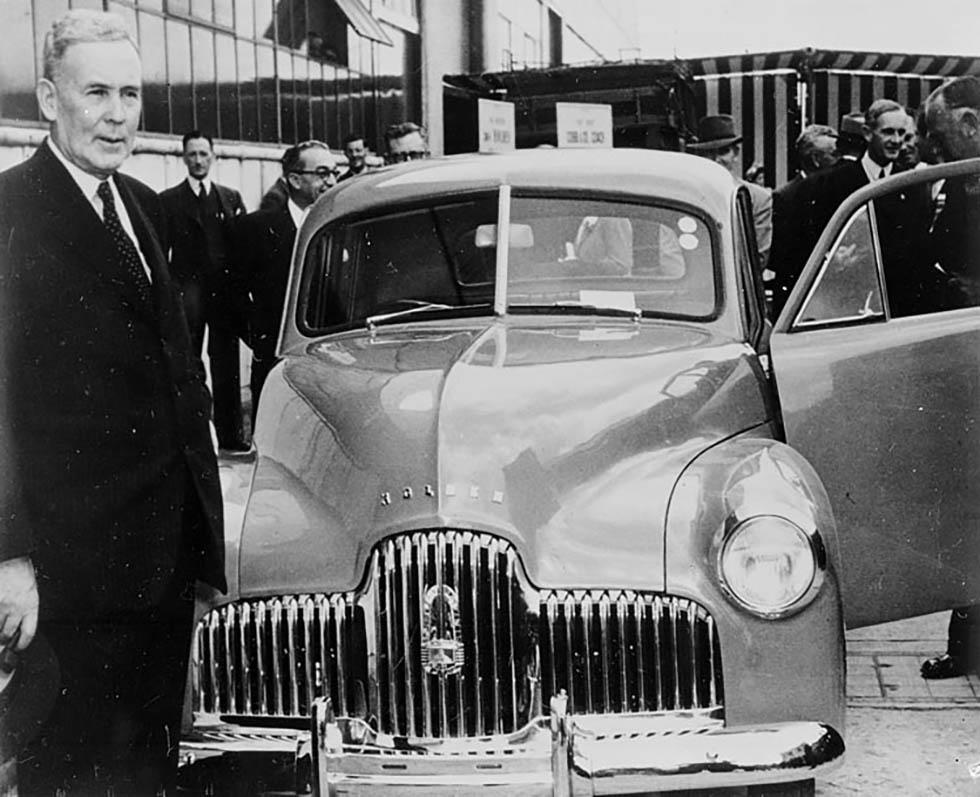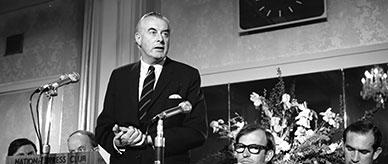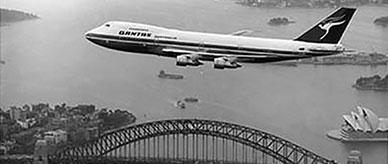


About this record
This black-and-white photograph shows Australian prime minister Ben Chifley at the launch of the Holden FX, the first mass-produced Australian-made car, at the General Motors-Holden's factory at Fisherman's Bend in Melbourne, Victoria, in 1948. Chifley is shown standing next to the first FX Holden to come off the factory's assembly line.
Educational value
- The photograph shows the Holden 48-215 or Holden FX, which was the first mass-produced Australian-made car, launched by Prime Minister Ben Chifley (1885–1951) on 29 November 1948. The Holden FX cost £733, which was approximately 2 years' wages for the average worker at the time. It was hugely popular and 120,402 vehicles were manufactured between 1948 and 1953. By the time of its launch, 18,000 people had already paid a deposit to buy a Holden FX.
- The Holden FX was developed after Chifley issued a challenge to the Australian automotive industry in 1944 to produce a car that would be entirely manufactured in Australia. Chifley felt that expansion of the industry would aid the nation's economic reconstruction in the postwar period by providing economic stimulus and jobs. Prior to this, local manufacturers had built car bodies that were fitted to chassis and engines imported from the United States.
- The Holden FX was designed for local driving conditions. It was a 6-cylinder, 4-door, 6-seater sedan that featured a rugged frame and a powerful but fuel-efficient engine, an important characteristic because petrol rationing, introduced during the Second World War, remained in force until 1950. The Holden FX was developed in conjunction with the North American firm General Motors, with whom Holden had merged in 1931 to form General Motors-Holden's.
- Mass production of an all-Australian car required the local car industry to modernise, so the government approached overseas manufacturers to help make the car in Australia. General Motors won the contract and in return the government removed tariff duties and sales tax on imports of capital equipment needed to upgrade the Holden factory. Improved production enabled Holden to meet the increased demand for cars in the postwar period.
- The popularity of the FX helped establish Holden cars as an Australian icon that by 1958 accounted for 43 per cent of car sales in the country. The FX embodied Australian dreams of prosperity, particularly after the austerity of the war years. The release of the FX coincided with an increase in car ownership, up from one in 8 people in 1948 to about one in 4 by 1956. Holden sales were aided by the introduction of import tariffs to protect the domestic car industry.
- The Holden car was named in honour of James A Holden who had set up the company as a saddlery and harness business in 1856, which then began manufacturing car bodies in 1914. A number of names for the first Australian-made car were trialled before 'Holden' was selected. It was decided that the name should be easy to pronounce and identifiably Australian – among those considered were 'Canbra' (the phonetic spelling of Canberra), 'Emu', 'Melba' and 'Anzac'.
Acknowledgments
Learning resource text © Education Services Australia Limited and the National Archives of Australia 2010.
Related themes
Need help with your research?
Learn how to interpret primary sources, use our collection and more.


